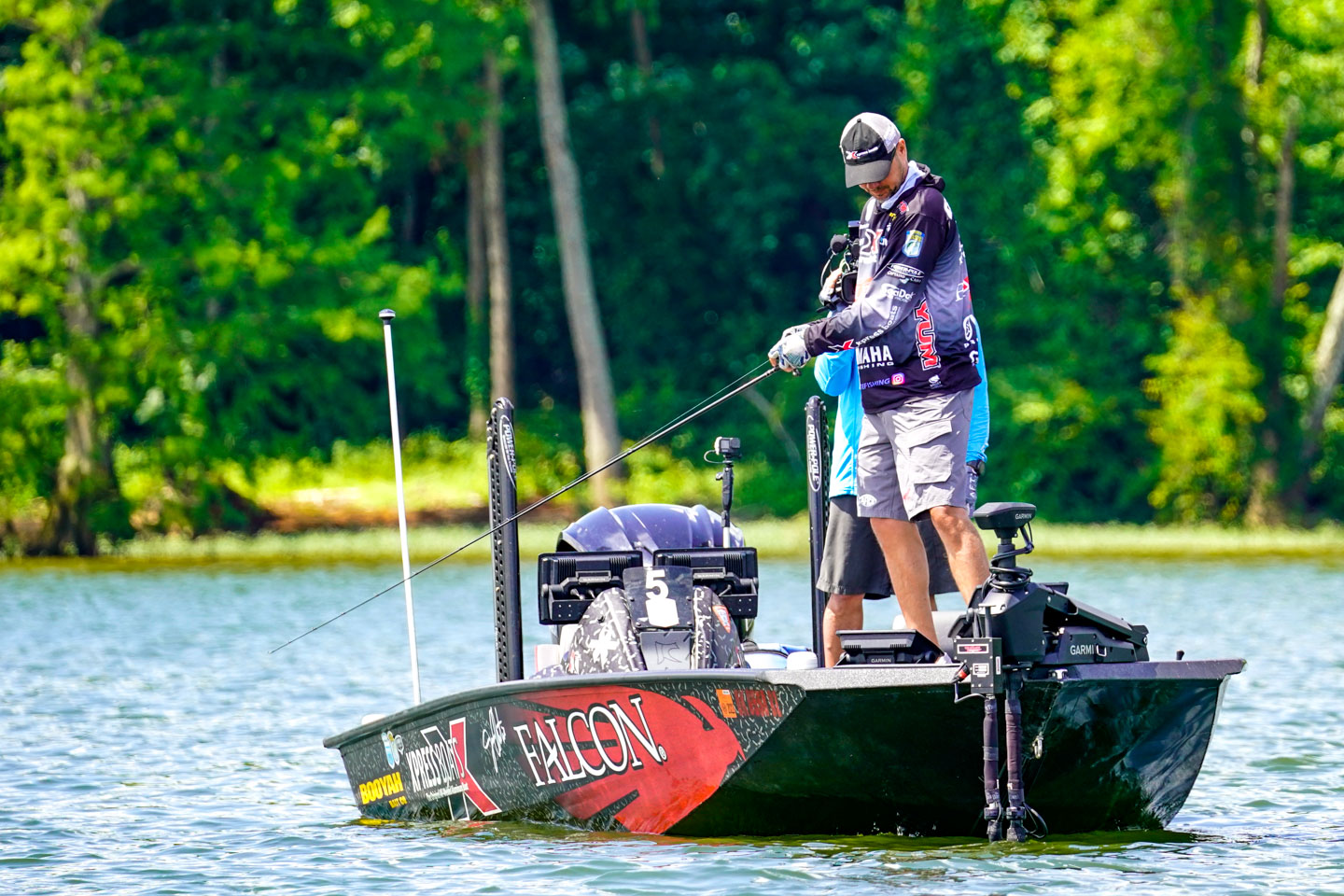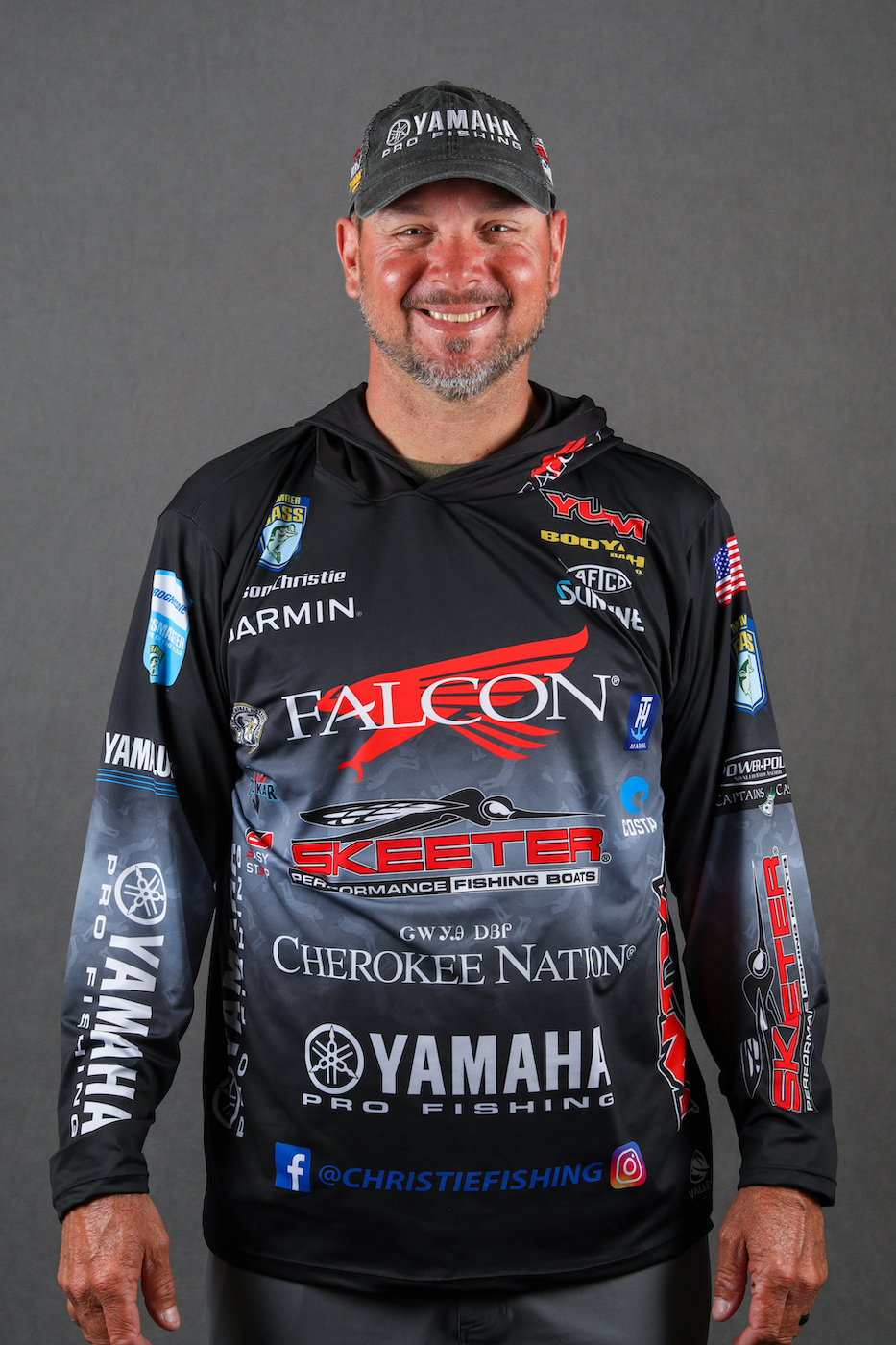
A lot of fans think of me as a shallow water guy. That’s not quite accurate, because I love to fish out deep, and I’ve won multiple times out deep. It’s just that the way the Bassmaster Elite Series schedule lays out, most of our events are geared at looking toward the bank. Yes, it’s true that back in the day shallow-water power fishing was my comfort zone, but today I’m just as comfortable looking at a screen as I am at the bank.
That’s in large part because of changes that date back about six or seven years, when I first saw forward-facing sonar. The team at Garmin told me that they had something game-changing, but over the course of my career I’ve learned to be cautious when you hear that term. Sometimes the product in question truly turns out to be a valuable tool, but other times it quickly gets put on the back burner.
When they first demonstrated to me the predecessor to today’s LiveScope technology (back then it was called Panoptix) it was so far out that I couldn’t really process what it was going to do for me. I’d never seen anything like it, and it took me a full week of fishing with it on my boat to fully comprehend how much it would alter my fishing going forward.
I can think back to the precise moment when it all clicked. I found a bass suspended in 60 feet of water, cast out my swimbait and counted it down. The whole time I watched the screen as that bass tracked the lure and then ate it. I realized I had something on my boat that would change fishing forever.
In those early days of LiveScope I was lucky that lots of anglers, even my fellow pros, did not immediately embrace it. After that one bite, I did everything that I could to make it work for me. It didn’t take long to reap the rewards. That summer I won an Elite Series event at St. Clair as the direct result of the technology. It was the easiest fishing I’d ever had in my life. I’d just drift around and zero in on my quarry. I’ve often compared it to rabbit hunting in the Walmart parking lot – there were no places to hide and just about every fish would eat my lure.
Shortly after that the crappie world embraced LiveScope and people started to post videos of how they were using it. That just poured gas on the fire. Today, it’s hardly a secret, and it seems everybody is pretty good with it. The challenge now is to stay ahead of the curve.
What I’ve realized is that it’s an incredibly powerful tool in shallow water too. I can be fishing in 2 feet of water on the Arkansas River and I’ll see a stump to my right, or I’ll find a little ditch just deep enough to float my boat to access places that no one else can.
It’s also a great tool for dialing in your lures. My first cast with a jerkbait is almost always directly in front of the trolling motor so that I can ensure the lure is working properly. With a crankbait there’s no longer any guesswork about whether your lure is running to the desired depth – now you can track its diving progress to be sure you can hit your targets.
LiveScope has also taught me a lot about bass behavior. I’ve always thought that it is critical to be as quiet as you can in the boat – now I know without a doubt that bass can feel the presence of the boat. You can be floating along, with no trolling motor on, and if you get too close they’ll scatter.
Despite all of those advantages, it’s not perfect. I know that a few people aren’t fans of using it in tournaments. Many of them think that if you see a fish on LiveScope it automatically ends up in your livewell. That’s definitely not the case. It often makes things easier, but there will never be any guarantees in bass fishing.
You can also be certain that the technology will continue to improve. Once I finally got my mind around the original Panoptix, I thought there was absolutely nothing more they could do. Then LiveScope showed up and it was even better. I thought that was the end. Then they came out with a transducer that produced a substantially clearer picture.
I can’t say what the team at Garmin is working on next, but I can guarantee you that they’re not completely satisfied, and certainly not resting on their laurels. They’re always working on something new, something better, and I’m certain to pay attention when they bring it out. I want to continue to stay ahead of the curve.





